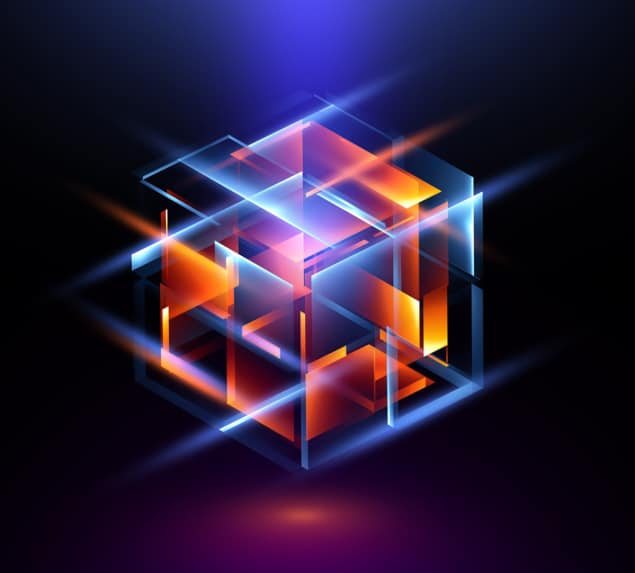
“Lattice surgery” has been used to quantum-mechanically entangle fault-tolerant topological qubits – an achievement that could lead to the production of more reliable quantum logic gates. Created by researchers in Austria, Switzerland and Germany, the entanglement technique could prove useful in the development of quantum error correction algorithms and ultimately to achieve scalable, large-scale quantum computation.
In principle, quantum computers can quickly solve certain problems that would take an eternity to compute on even the most powerful conventional computer. While this “quantum advantage” has been established experimentally using small-scale quantum computers to solve highly-specialized problems, it remains a significant challenge to scale-up these devices to create larger, practical quantum computers that can solve a range of different problems.
A big problem with today’s quantum devices is that errors are quickly introduced to a calculation via interactions with noise, heat and other disturbances from the surrounding environment. In classical computers, errors can be measured and corrected, but in quantum computers the very act of measuring a quantum bit (qubit) of information causes it to collapse. This build-up of errors puts severe limits on the size of a quantum computer and the size of the computation it can achieve. Indeed, the largest quantum computer to date – Google AI’s Sycamore – contains just 53 qubits, whereas a standard PC contains billions of conventional bits.
Sophisticated storage
To create much larger quantum processors, physicists are trying to develop more reliable qubits as well as “quantum error correction” protocols to deal with the inevitable faults that will occur. Most of these correction schemes involve encoding each “logical qubit” (the quantum equivalent of the 1 or 0 in a classical bit) into the states of several physical qubits such as individual trapped ions or superconducting circuits. “In the classical case, if you want to store logical information, you can just write it on several pieces of paper, and if you lose one you won’t be affected as much,” explains Nicolai Friis of the University of Innsbruck. “For quantum information, the problem is that you cannot write this information down, so you need a more sophisticated way of storing it.”
In one of the most promising implementations, the logical qubit state is stored as the topological relationship between multiple physical qubits on the edge of a mathematical 2D lattice. There is a hitch, however: useful qubits must be robust against noise but still able to interact controllably with other qubits. Whereas a single trapped ion will interact readily with another ion, controlling the interactions between qubits based on two topological lattices has not proved possible.
“People take a collection of physical qubits, they impose some code structure to create a logical qubit, and then they show that you can do operations on that single logical qubit,” explains Friis. “But in order to obtain a universal gate set that will enable you to do quantum computation on any number of logical qubits, you need entangling operations on two logical qubits.”
Surgical stitching
In their new work, Friis and colleagues produced two topologically-protected logical qubits, each encoded into the topological surface state of four ions. The ions were held in an ion trap containing ten ions. By tuning the laser frequencies to alter interactions between the ions, the team performed a technique called lattice surgery, stitching the surface states together into one large state. Finally, they divided this state into two states once again. The final topological state of one qubit was conditional on the initial state of the other: “Depending on how you merge them, what you do and how you bring them apart again, that depends on what kind of gate you get,” explains Friis. Logical qubits that were corrupted by an error in one of the physical qubits could be detected, although the error could not actually be corrected.

Ion-based commercial quantum computer is a first
The researchers now hope to increase the size of the logical qubits, which would boost their robustness to errors in the physical qubits, as well demonstrating more complex interactions involving more than two qubits. “Ultimately, you want to perform error correction,” says Friis.
The research is described in a paper in Nature.
“I think it is a very neat paper because it does show fault tolerant or robust entangling gates,” says Raymond Laflammme, the founding director of the Institute for Quantum Computing at the University of Waterloo in Canada, “but it does this for only two encoded qubits and it doesn’t show the [full] family of gates. This paper is really interesting from the physics point of view because it shows that they have enough control to do these gates very well. If you’re not a researcher in a university but you’re in a company that wants to use a device to quantum compute, this falls well short of what you want…It’s the first milestone in a family of experiments that will end up producing a reliable quantum computer.”
